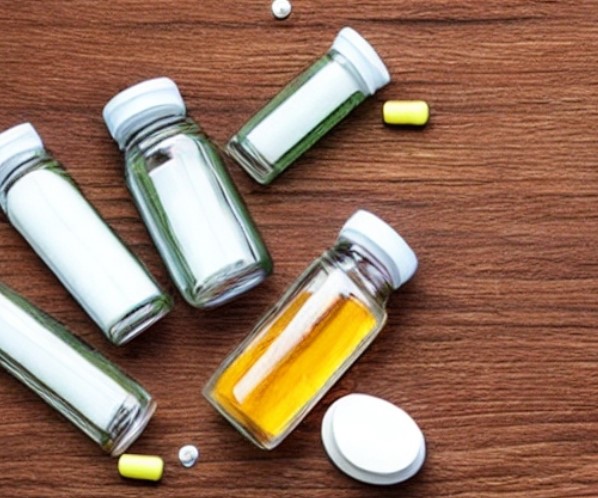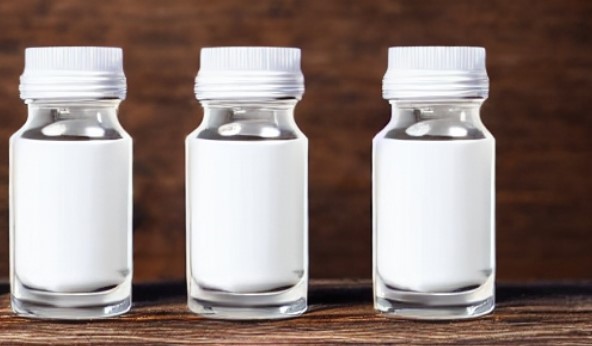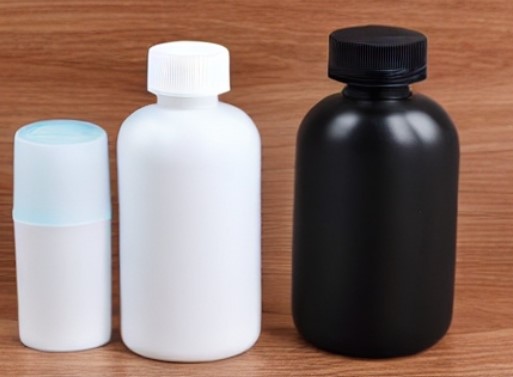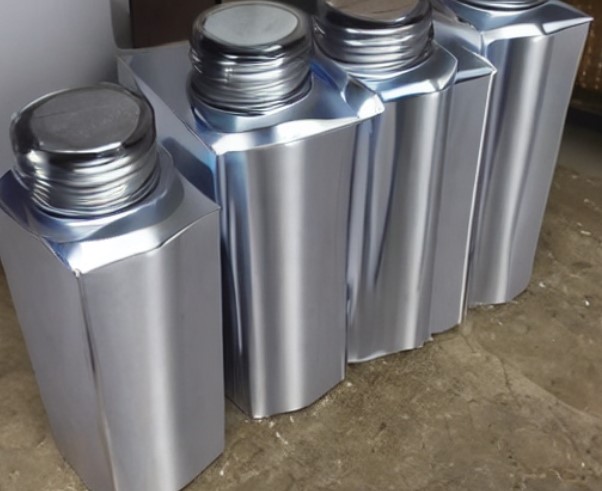Pharmaceutical Packaging is an art, and technology to enclose and safeguard products during their distribution, storage, sale, and use. It contains the process of designing, evaluating, and producing packages. In pharmaceuticals, packaging provides several essential functions, including presentation, protection, identification, information, convenience, compliance, integrity, and stability of the product.

Functions of Pharmaceutical Packaging:
- Packaging helps in identifying and differentiating products.
- Packaging safeguards the inside product from spoilage, breakage, leakage, and other forms of damage.
- Packaging should be convenient to open, handle, and use for consumers.
- Packaging is used for promotional purposes and attracts the attention of consumers during purchase.
Factors Affecting Pharmaceutical Packaging:
Various factors influence pharmaceutical packaging, including the following:
- Dosage form compatibility; For example, it may be dangerous if a rubber-reactive drug substance is filled in rubber-type packaging.
- Route or mode of administration; For example, eye drops require a narrow mouth opening, and in the case of cream, it requires a wide mouth.
- Marketing area; For example, if a marketing company wants to show an image demonstration on the product label. So overall area on the label required more space, which lead to a change in packaging dimension.
- Sterilization methods and cost; For example, In the case of heat sterilization, Glass containers are required for packaging.
- The mode of dispensing using a combined device/pack also affects the Pharma Packaging.
- Content Stability and Protection from Environmental Factors; Packaging ensures that the product remains stable and protected from any environmental factors that could affect its quality. For example, Packaging in airtight containers to prevent exposure to moisture, light, and air, could potentially degrade the medication.
- Content Reactivity with Packaging Material; Packaging materials should be carefully chosen to prevent any reactivity between the product and the packaging material.
- Acceptability of the Packaging to the Consumer or User; For example, blister packs are often used for individual doses of medication, and becomes easy for consumers to use it.
- Regulatory, Legal, and Quality Issues in the Packaging Process; Packaging must adhere to regulatory and legal requirements, ensuring that it meets safety standards and provides accurate and essential information to consumers. So Quality control test procedures shall be followed to maintain packaging integrity throughout its shelf life.
Types of Packaging testing:
Types of packaging testing include:
- Drop tests, Collapsibility tests
- Vibration tests
- Shock tests
- Inclined impact tests, and Revolving drum tests.
Related: Packaging Testing
Ideal characteristics of pharmaceutical packaging
Ideal characteristics of pharmaceutical packaging are as follows:
- Providing a high degree of protection against environmental contaminants.
- Demonstrating compatibility (physical and chemical) with the product material.
- Facilitating easy handling, storage, and transport according to customer convenience.
- Supporting sterilization methods and participation in the recycling process.
- Exhibiting longevity and excellent printing properties.
- Offering cost-effective solutions.
Types of Packaging:
Pharmaceutical packaging can be classified into three types:
Primary packaging: This involves direct coverage of the product and provides the initial safety barrier. It is often intended for the end user or consumer and is also known as consumer unit packaging. Examples include strips, blisters, bottles, and spray cans.
Secondary packaging: This type of packaging is applied outside the primary packaging and facilitates the handling of smaller products by combining them into a single pack. Examples include cartons, plastic wrappers, and trays.
Tertiary packaging: It is used for bulk handling and shipping, facilitating the storage, handling, and transportation of goods. Tertiary packaging provides the final barrier to protect products from damage. Example includes Boxes.
Types of Packaging Materials
Pharmaceutical packaging materials include glass, plastic, metal, rubber, and paperboard.
1. Glass packaging:

Glass has been widely used as a drug packaging material. It is made up of sand, soda ash, limestone, and cullet. Silicon (Si), aluminum (Al), sodium (Na), potassium (K), calcium (Ca), magnesium (Mg), zinc (Zn), and barium (Ba).
Advantages and Disadvantages of Glass containers:
Advantages:
- Transparency.
- Hygenic and suitable for sterilization.
- Non-Reactive
- It can accept a variety of closure
- Good protection against moisture and temperature for powder.
- Availability of colored glass for sensitive materials.
Disadvantages:
- Fragility, so Easily Broken.
- Heaviness.
- Risk of product contamination or alkali release from broken glass.
Different types of Glass containers
Different types of glass containers are categorized based on their hydrolytic resistance: Type I, Type II, Type III, and Type IV.
Type I Glass containers (Borosilicate Glass):
Types I glass containers are generally Borosilicate, Neutral glass which is high hydrolytic resistance, and is suitable for packaging most of the formulation.
- Alkalinity is removed by using boric oxide to neutralize the oxide of potassium and sodium.
- It is a highly resistant glass.
- It has a high melting point so can withstand high temperatures.
- It is more chemically inert than the soda lime glass.
- It can resist strong acids, alkalies, and all types of solvents.
- Reduced leaching action.
Usage: These are used in Laboratory, and filling of Injection and Water of injection.
Type II Glass containers (Treated Soda lime Glass) :
These types of glasses are usually treated soda lime glass. These are de-alkalized or treated to remove alkali. These glasses are suitable for most acidic and neutral, and aqueous formulations.
The de-alkalizing process is known as sulphur treatment. Sulfur treatment neutralizes the alkaline oxides on the surface, rendering the glass more chemically resistant.
Uses:
- Used for alkali-sensitive products.
- Infusion fluids, blood, and plasma.
- Large volume container.
Type III and Type IV glass:
Both have similar compositions and are distinguished from each other on the basis of their hydraulic resistance.
- Type III has average or slightly better than average resistance and is suitable for non-aqueous parenteral and non-parenteral products.
- Glass containers type III are normally dry sterilized before being filled.
- Type IV has the lowest hydraulic resistance. it is more suitable for filling solid products, some liquids, and semi-solids. it is not used for parenteral products.
2. Plastic container:

Plastics can be described as a group of substances, either natural or synthetic, consisting mainly of high molecular weight polymers that can be shaped or molded using heat and pressure.
Advantages
- Cost-effective alternative to glass.
- Easy to transport.
- Eliminates the risk of breakage.
- Lightweight compared to glass.
- Offers flexibility.
- Plastic is Available in different types of shapes and sizes.
- Chemically inert, providing strength, rigidity, safety, high quality, and diverse designs.
- Extremely resistant to breakage.
Disadvantages
- Not as chemically inert as Type-I glass.
- Potential leaching from the container to the product.
- Possibility of sorption (absorption or adsorption) of drug molecules or ions on the plastic materials.
- May possess an electrostatic charge that attracts particles.
Classes of Plastics
Plastics can be categorized into two classes based on their behavior when exposed to heating and cooling.
i) Thermoplastics
- Can be shaped after initial heating and solidified upon cooling.
- Soften to a viscous fluid when heated, and harden again upon cooling.
- Resistant to breakage and cost-effective to produce.
- When the right plastics are chosen, they provide necessary product protection in attractive containers.
- Examples: Polystyrene, polyethylene, polyvinyl chloride, polypropylene, nylon, polyethylene terephthalate, polyvinylidene chloride, polycarbonate, acrylonitrile butadiene styrene.
ii) Thermosets
- Require heat for processing into a permanent shape.
- Become flexible when heated but do not become liquid.
- Form permanent crosslinks between linear chains during heating, resulting in solidification and loss of plastic flow.
- Examples: Urea formaldehyde, phenol formaldehyde, melamine formaldehyde, epoxy resins, and polyurethanes.
Types of Plastics
Polyethylene
- Available as high-density and low-density polyethylene.
- Low-density polyethylene (LDPE):
→ Preferred plastic for squeeze bottles.
→ Properties: Easy to process, acts as a barrier to moisture, offers strength/toughness, flexibility, and ease of sealing. - High-density polyethylene (HDPE):
→ Less permeable to gases, resistant to oils, chemicals, and solvents.
→ Properties: Stiffness, strength/toughness, and chemical resistance.
→ Widely used in bottles for solid dosage forms.
Drawback: Polyethylene is Prone to stress cracking in the presence of surfactants or vegetable/mineral oils.
Polypropylene
- Exhibits good resistance to cracking when flexed.
- Resistant to heat sterilization.
- Colorless, odorless thermoplastic material with excellent tensile properties even at high temperatures.
- Excellent resistance to strong acids and alkalis.
- Low permeability to water vapor.
- Intermediate gas permeability between polyethylene HD and un-plasticized PVC.
- Suitable for use in closures, bulk-filling tablet containers, and I.V. bottles.
Polystyrene
- Known for its versatility, insulation properties, clarity, and ability to be easily foamed (e.g., “Styrofoam”).
- Also used for jars containing ointments and creams with low water content.
Drawback: Chemicals like isopropyl myristate can cause crazing (a fine network of surface cracks), leading to weakening and eventual collapse of the container.
Polyvinyl Chloride
- Polyvinyl Chloride has versatility, ease of blending, strength/toughness, resistance to grease/oil, resistance to chemicals, and clarity.
- Used as a rigid packaging material and a main component of intravenous bags.
Drawback: The plastic exhibits poor impact resistance, which can be enhanced by incorporating elastomers into the material. However, this modification may result in increased permeability.
3. Metals Container:

- Metals are commonly used for constructing containers.
- The metals used for this purpose include aluminum, tin-plated steel, stainless steel, tin, and lead.
Advantages:
- High material strength, capable of withstanding internal pressure in aerosol containers.
- Shatterproof.
- Impermeable to gases.
- Provides a barrier to light (opaque, which has both advantages and disadvantages).
- Excellent heat transmission (metals conduct heat approximately 100 times better than glass and 400 times better than plastics).
- Well-established manufacturing methods.
- Malleability, allowing customization of hardness and flexibility for containers.
- Lightweight finished package due to the material’s strength in thin cross-sections.
- Exterior decoration options (aluminum and tinplate can be highly decorated).
- Tamper-evident (breaking a metal seal cannot be reversed).
- Lightweight compared to glass (glass containers are heavier).
- Impermeable to light, moisture, and gases.
- Rigid unbreakable containers can be created through impact extrusion.
- Labels can be printed directly on their surface.
Disadvantages:
- Potential interaction with the product (the metal must be coated or insulated from the product).
- Limited shelf life for liquid products.
- Container weight compared to glass (density of aluminum containers is approximately 2.7, which can compete well with plastics; tinplate containers with a density over 8 cannot compete against plastics).
- High cost of production in small unit volumes (which can be advantageous or disadvantageous depending on container specifications).
- Difficulty in producing small-volume containers.
- Primarily suited for food products.
- Expensive.
- Reactive with certain chemicals.
Collapsible Metal Tubes
- Collapsible metal tubes are attractive containers that have properties likes; controlled dispensing, easy re-closure, and adequate product protection.
- They are lightweight, unbreakable, and suitable for high-speed automatic filling operations.
- The most commonly used metals for collapsible tubes are tin, aluminum, and lead.
Tin:
- Preferred for food, pharmaceuticals, and any product where purity is crucial.
- Tin is the most chemically inert among all collapsible metal tubes
Aluminum:
- Offers significant savings in product shipping costs due to its lightweight.
- Attractive in nature.
Lead:
- The least expensive, and used for non-food products, medicines like adhesives, inks, paints, and lubricants.
- Should never be used alone for anything taken internally due to the risk of lead poisoning.
- Lead tubes with internal linings are used to fill products for example; chloride toothpaste.
4. Rubber Closure:

- Elastomers, commonly known as rubber, are polymers used in the construction of closures for pharmaceutical packaging like; vials, transfusion fluid bottles, and washers in various other products.
- Common rubbers used in pharmaceutical packaging include butyl rubber, chlorobutyl rubber, natural rubber, and silicone rubber.
i) Butyl Rubber:
Advantages:
- Permeable to water vapor.
- Very low water absorption.
- Cheaper than synthetic rubbers.
Disadvantages:
- Slow decomposition above 130°C.
- Poor resistance to oil and solvents.
ii) Nitrile Rubber:
Advantages: Oil-resistant due to polar nitrile group. Heat-resistant.
Disadvantages: Considerable absorption of bactericide and leaching of extractives.
iii) Chloroprene Rubber:
Advantages: Oil-resistant. Good heat stability.
iv) Silicone Rubber:
Advantages:
- Heat-resistant.
- Extremely low absorption and permeability to water.
- Excellent aging characteristics.
Disadvantages:
- Expensive.
Conclusion:
In conclusion, Pharmaceutical packaging plays an important role to save drugs from external environmental factors, and inner reactivity and helps in enhancing their shelf life. For this Selection of types of containers is very crucial while keeping in mind whether the product’s physical and chemical properties of the drug substance are compatible or not. Each material has its advantages and disadvantages, and careful consideration is necessary to select the appropriate packaging material for a given pharmaceutical product.

Naresh Bhakar is the Founder and Author at Pharmaguddu.com, bringing his extensive expertise in the field of pharmaceuticals to readers worldwide. He has experience in Pharma manufacturing and has worked with top Pharmaceuticals. He has rich knowledge and provides valuable insights and data through his articles and content on Pharmaguddu.com. For further inquiries or collaborations, please don’t hesitate to reach out via email at Contact@pharmaguddu.com.
